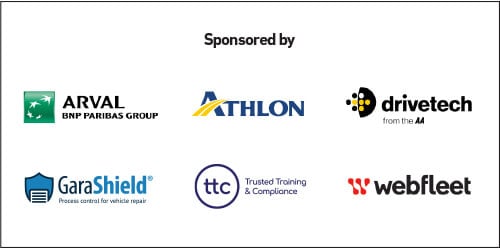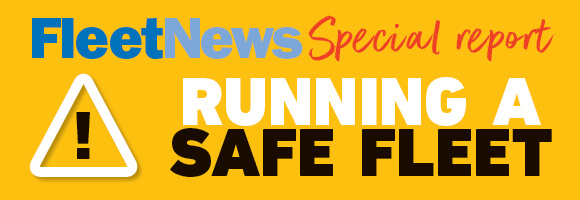This feature was taken from our special Running a Safe Fleet report.

Drink-driving has long been one of the biggest sources of risk on UK roads. The sheer amount of awareness campaigns around it reflects this.
Indeed, it has long been one of the established Fatal Five behaviours which are the major contributors to collisions which see people either killed or seriously injured – the others being excessive speed, distracted driving, careless driving and not wearing a seatbelt.
However, the National Police Chiefs Council last year reported the occurrence of detected drink-driving has now been overtaken by drug-driving, with more than half of those drivers caught either driving for or to work.
This means it is imperative that fleet managers take action to tackle the problem.
“Drivers are putting themselves, their passengers and other road users at serious risk every time they get behind the wheel after consuming drugs,” says Sharon Haynes, director – police, at risk management company TTC.
“Whether employees are driving a company car or their own vehicle, if they are driving for work the company still has a duty of care.
“Ultimately, fleet managers need to help those people who have an attitude of ‘it won’t happen to me’ understand the very real risk they pose to themselves and others whenever they drink- or drug-drive. There is a significant opportunity for employers to educate their employees and help reduce risk.”
Effects of drug-driving
There is no single way that drugs affect the body as the exact effect they have will depend on the type of substance.
Cannabis, for example, slows reactions and affects concentration. Research using driver simulators has found cannabis makes drivers less able to steer accurately and slower to react to another vehicle’s movements.
Cocaine and ecstasy, however, cause over-confidence and erratic behaviour. These three drugs are among the eight – heroin, ketamine, LSD, meth and speed are the others – that are most associated with illegal use, although legal limits are set at a level where any claims of accidental exposure can be ruled out.
It is also an offence to drive if you have over the specified limits of nine medicinal, or prescription, drugs in your blood and you have not been prescribed them: amphetamine, clonazepam, diazepam, flunitrazepam, lorazepam, methadone, morphine or opiate and opioid-based drugs, oxazepam and temazepam.
Drivers caught and convicted of drug-driving can receive a minimum 12-month driving ban, a criminal record, an unlimited fine and up to six months in prison.
The maximum penalty for causing death by dangerous driving under the influence of drugs in life imprisonment.
Many prescription and over-the-counter drugs also impair people’s ability to drive safely, for example causing drowsiness, affecting reaction times and vision.
If drivers are taking prescription drugs which may cause any of these symptoms, they should make their employer aware so they can have their work duties changed if necessary.
Policy implementation
To tackle the threat of drug-driving, a fleet decision-maker should develop and implement a drug-driving policy.
This may require specialist advice, co-operation from drivers and sensitive implementation to ensure it fits the culture of an organisation.
An important first step is for an employer to decide what limits it will accept. These obviously cannot exceed the legal limits, but many organisations, such as Mitie, choose zero tolerance as the safest option.
It also needs to ensure its fleet safety policy includes a section on drug-driving, explaining why screening is to be done, to who, by who and the consequences of a positive test.
For example, in its commercial vehicle handbook, Balfour Beatty explains its policy is “designed to eliminate the risks inherent in the use and abuse of drugs and this applies to all its staff, agency and supply chain employees while at their workplace, and to visitors to company premises or workplaces.
“Employees must always be in a fit state to carry out their duties while at work, and must not possess, consume or be under the influence of impairing substances”.
Balfour Beatty states testing may be carried out on reasonable suspicion, or following an accident or incident, while it also reserves the right to carry out random testing where it is considered appropriate.
LeasePlan suggests employers also perform random checks on a percentage of their drivers every month.
The drug-screening process should use a non-invasive method of collection, such as specialist wipes which test saliva.
Screening must be carried out properly to ensure samples cannot be contaminated or tampered with, and that testing procedures and analysis are accurate.
Positive results
The consequences of a positive result should be dealt with confidentially.
Balfour Beatty, for example, invokes the disciplinary process which may lead to summary dismissal for employees who are in breach of its programme.
The company’s policy states it will treat sympathetically requests for help from employees with a drink or drug problem (but not after, or immediately before, testing for drugs). During any regime of treatment, the individual will remain subject to the requirements of this policy while at work.
The Health and Safety Executive recommends line managers should be briefed on the signs of drug abuse so they can be aware of any issue which may lead to a collision or other work accident.
These warning signs include unexplained or frequent absences, a change in behaviour, unexplained dips in productivity, more accidents or near-misses, and performance or conduct issues.
You could be forgiven for thinking that all fleet managers are interested in these days is electric vehicles: how to transition, charging, reimbursements and so on. Such discussion dominates opinion pieces, media column inches, social media discussion and even webinars.
Yes, it’s a juicy topic. No, it’s not what most fleet decision-makers are spending all their time thinking about.
This report on running a safe fleet looks at how to create a safety culture and implement a driver behaviour programme, as well as tackle root causes of accidents, in discussion with fleet leaders and industry experts with the sole purpose of helping you to deliver a robust risk and compliance policy, protecting both your staff and your business.






















Login to comment
Comments
No comments have been made yet.